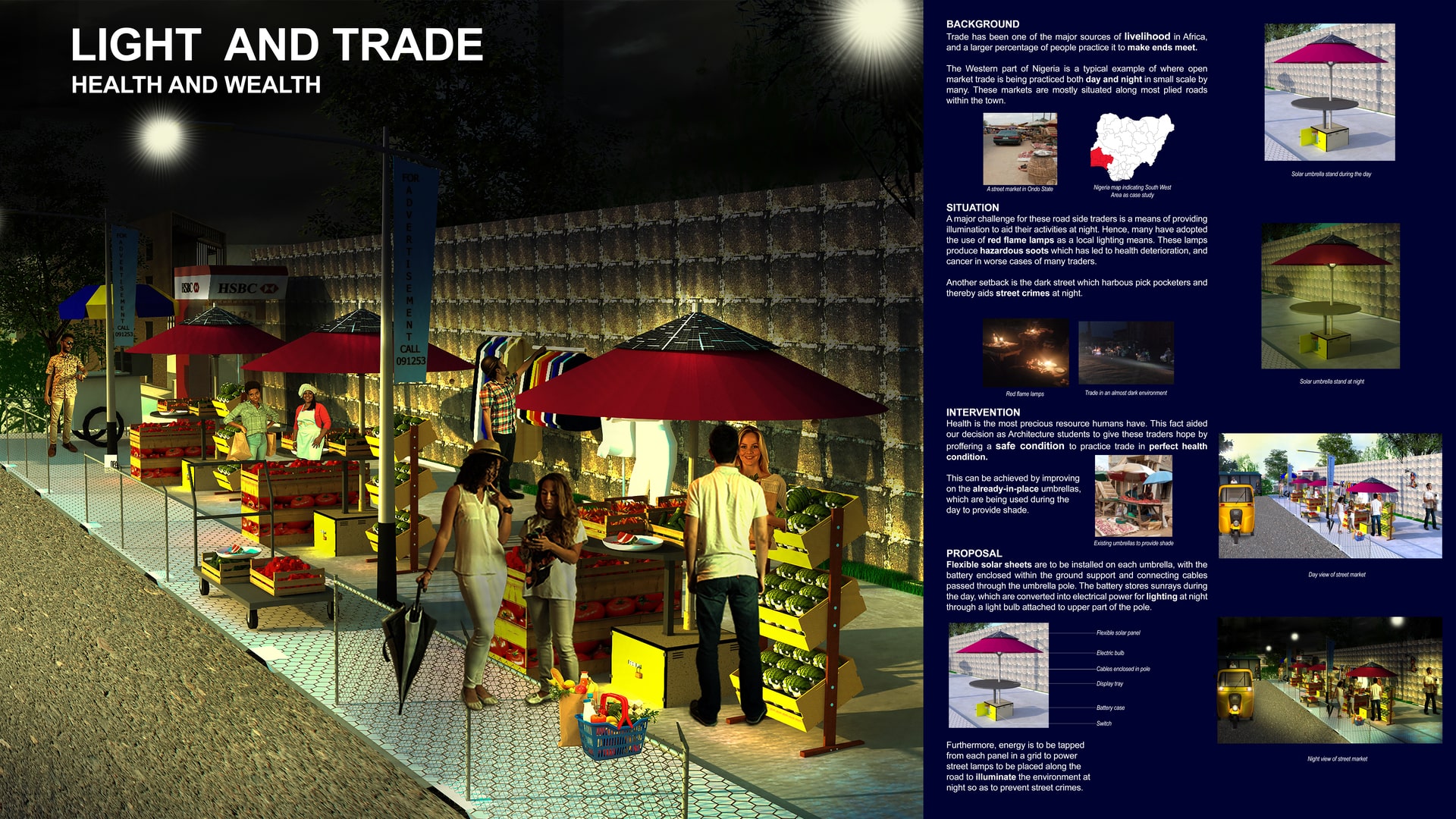Project Description
A common sight in Africa’s sprawling Peri-Urban areas is the wide spread proliferation of petty traders. In history, two types of traders emerged; supplementary traders who deal in agricultural products and subsistence traders that support themselves through hawking. The latter are labelled as street traders and with time, they developed into having open stands alongside roads. Nigeria is used as a case study, as street trade has been one of the major sources of livelihood, especially in the South-Western areas. Despite the advances in modern retailing, a large percentage of people still make ends meet through selling of goods on the street both day and night. One of the setbacks these traders experience is the absence of proper lighting at night, as they sell their goods in an almost dark environment. They depend on the use of red flame lamps as a local lighting means. These lamps are made of tins, wools and kerosene, which produce naked red flames and in turn produce soot made of tiny carbon particles formed from incomplete combustion. The soot enters the body through inhalation, ingestion or through the skin and eyes and these toxic particles cause asthma, coronary heart disease, bronchitis and cancer, which cause premature deaths. All these health challenges have been recorded over time among the street traders due to the use of red flame lamps. Another problem that arose from the absence of proper lighting is the increase in the rate of street crimes. Thieves lock around the street traders at night using the almost dark environment for hideous activities and robbing the traders of their goods and their hard-earned money. These pick pocketers have been untraceable many a times because of their unseen faces shadowed by the dark. As health is the most precious resource humans have, we as creative architecture students aim to provide a safe condition in terms of peace and health considerations for struggling street traders to practice their trading activities, especially at night. This is to be achieved by improving on the already-in-place material with which the traders are familiar with to avoid introducing a totally bizarre idea. The umbrellas used by the traders to mark individual territory and for shading during the day are to be used as basis to proffer lighting solution at night. This is aided by putting in place solar panels with batteries to store and convert sun rays into light for illuminating each trader’s stand and the street at large. Flexible solar sheets are to be installed on the umbrella’s fabric around the finial, taking into consideration the rib assembly to ensure foldability. The battery is to be enclosed in the rectangular base, which is to be bigger to accommodate the battery size and to have more rigidity due to the additional weight of the solar sheets. Connecting cables between the solar sheets and the battery are to be passed through the umbrella pole and protected with a smaller plastic pipe to prevent moisture, peeling, bending and breaking. A light bulb is to be installed at the upper part of the pole to illuminate each stand, and energy is to be tapped from each umbrella stand in a grid pattern to supply the raised street lamps set in place at strategic points along the street to lighting the environment. In conclusion, street trading is a reality that is unlikely to go away, as street traders are often responsible for large numbers of dependents. They also provide the poor urban residents with goods and services in small quantities at any time, and this contributes to the proper functioning of cities at large. Hence, this project proffers a solution that is efficient through times and seasons to improve the health and safety of street traders in an environment, as well as the community at large.
